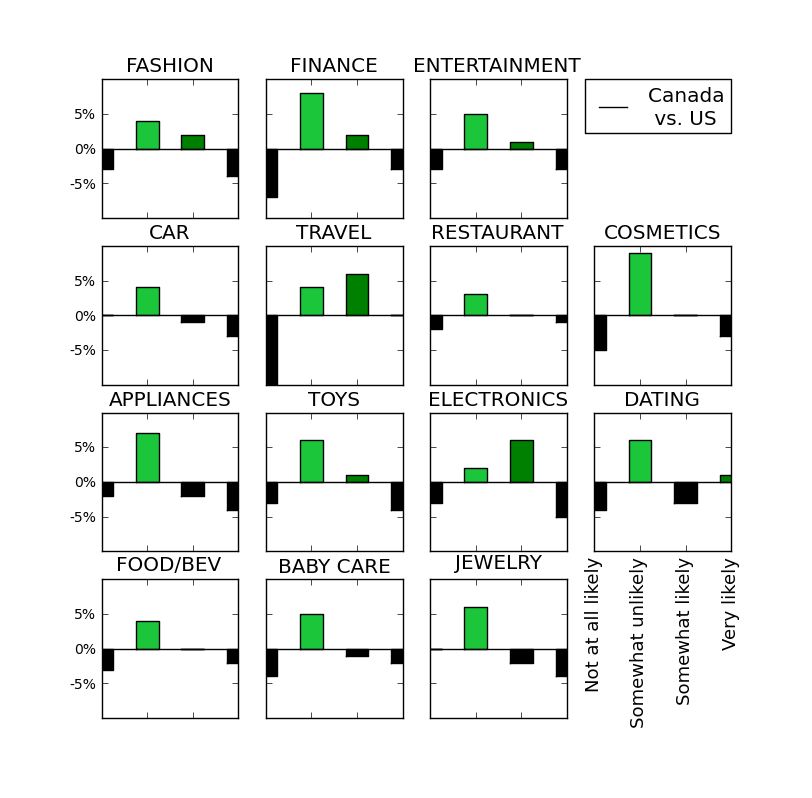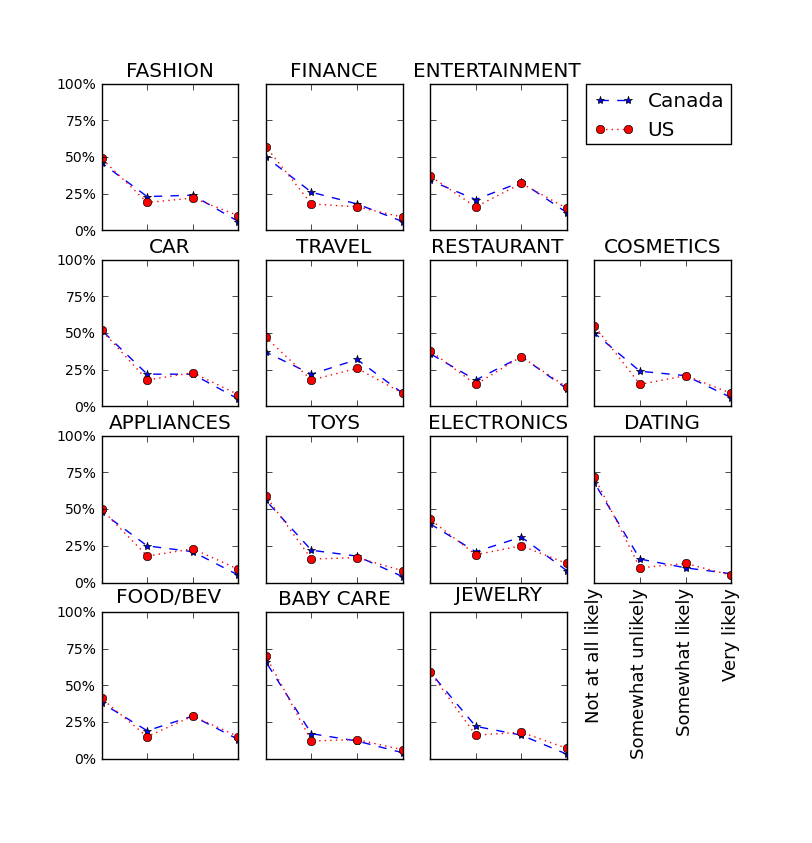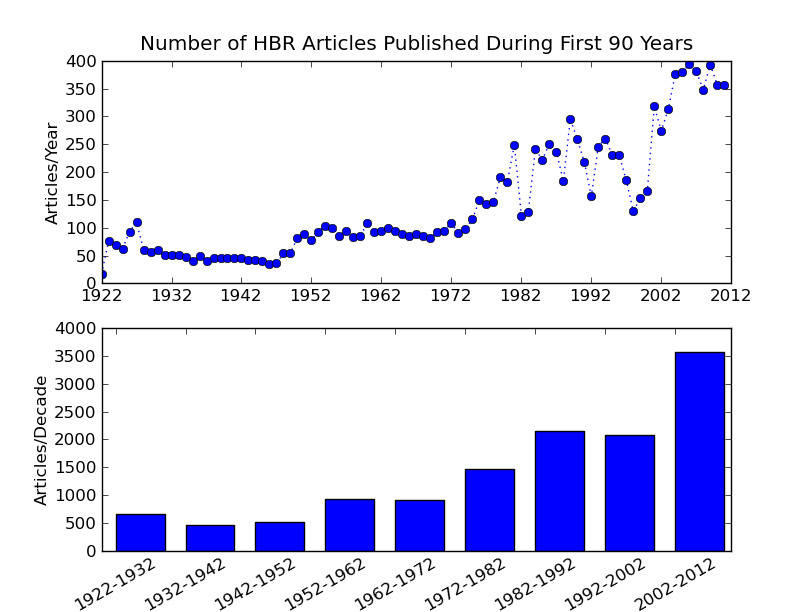As shown yesterday, the US and Canada have very similar reported expectations for future purchases based on online reviews etc. In fact, in most cases the difference between their reports is under 5%. However, I noticed one interesting trend. It seems Canadians are consistently more likely to report a “Somewhat unlikely” prediction. Confusing? I think so too and suspect that as Americans we are uncomfortable with the terminology “Somewhat unlikely” and therefore avoid selecting that option. At least this is one theory. I suspect this is not significant data, but more “likely” a linguistic issue.
The figure below shows the difference between Canadian and US reporting, in EVERY category, more Canadians reported “Somewhat unlikely”. With the exception of the TRAVEL and ELECTRONICS categories, the “Somewhat unlikely” response (lightest green) differed more than any other.
Difference of Canadian and US Response to forecasted purchases based on online media by category
Conclusion: American’s are somewhat less likely than Canadians to select “Somewhat unlikely” for predictions.


